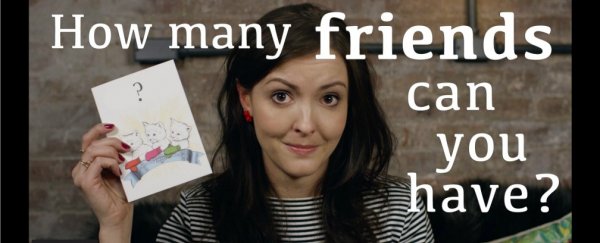
As the latest episode of BrainCraft (above) explains, there really is such a thing as too many friends - at some point our brains may simply struggle to process so many close relationships. And scientists have actually managed to calculate that number.
But to work it out, they first needed to understand why we have friends in the first place. A popular theory known as the social brain hypothesis suggests that human intelligence actually evolved to help us negotiated our complex social groups back when we were living in hunter-gatherer tribes and it was crucial to surround ourselves with people to stay alive.
Of course maintaining these social groups takes time, and the bigger the group, the bigger "processor", or brain, you need to have to stay on top of all your friends.
Fascinatingly, scientists have found that one particular brain region is associated with the size of a primate's social group - the neocortex. This region is located in the outer layer of the brain and is involved in higher functions such as spatial reasoning, conscious thought and language.
Researchers have since studied the size of neocortex's throughout primates, and mapped them to the size of their social group and found that the two numbers correspond in a surprisingly predictable pattern.
For example, lemurs, which have the smallest neocortex of all primates, have a pretty limited social group of have around nine other lemurs in their social group. Bonobos have a larger neocrotex and they have 14. Chimpanzees, which have the highest neocortex of all primates (except for humans) live in social groups of 53.
So, hypothetically, we could use this pattern to work out our own ideal social network. According to British anthropologist Robin Dunbar, the number of friends we can sustain is around 150, also known as Dunbar's number.
But unlike animals living in relatively defined social groups, humans are a bit more complicated - if you're going off Facebook, for example, most of us have more friends than that.
To test whether Dunbar was right, scientists have tracked the number of Christmas cards people send to each other, and their relationship with the recipients, to work out the average size of our social group.
Without giving too much away, let's just say Dunbar would have been pretty happy with the results.
Watch the episode above to find out how social media is changing our social networks, and also why Dunbar's number isn't quite set in stone. It may be kind of cold to think of your friends as nothing more than drains on your neocortex, but it's also fascinating.
Source: BrainCraft
